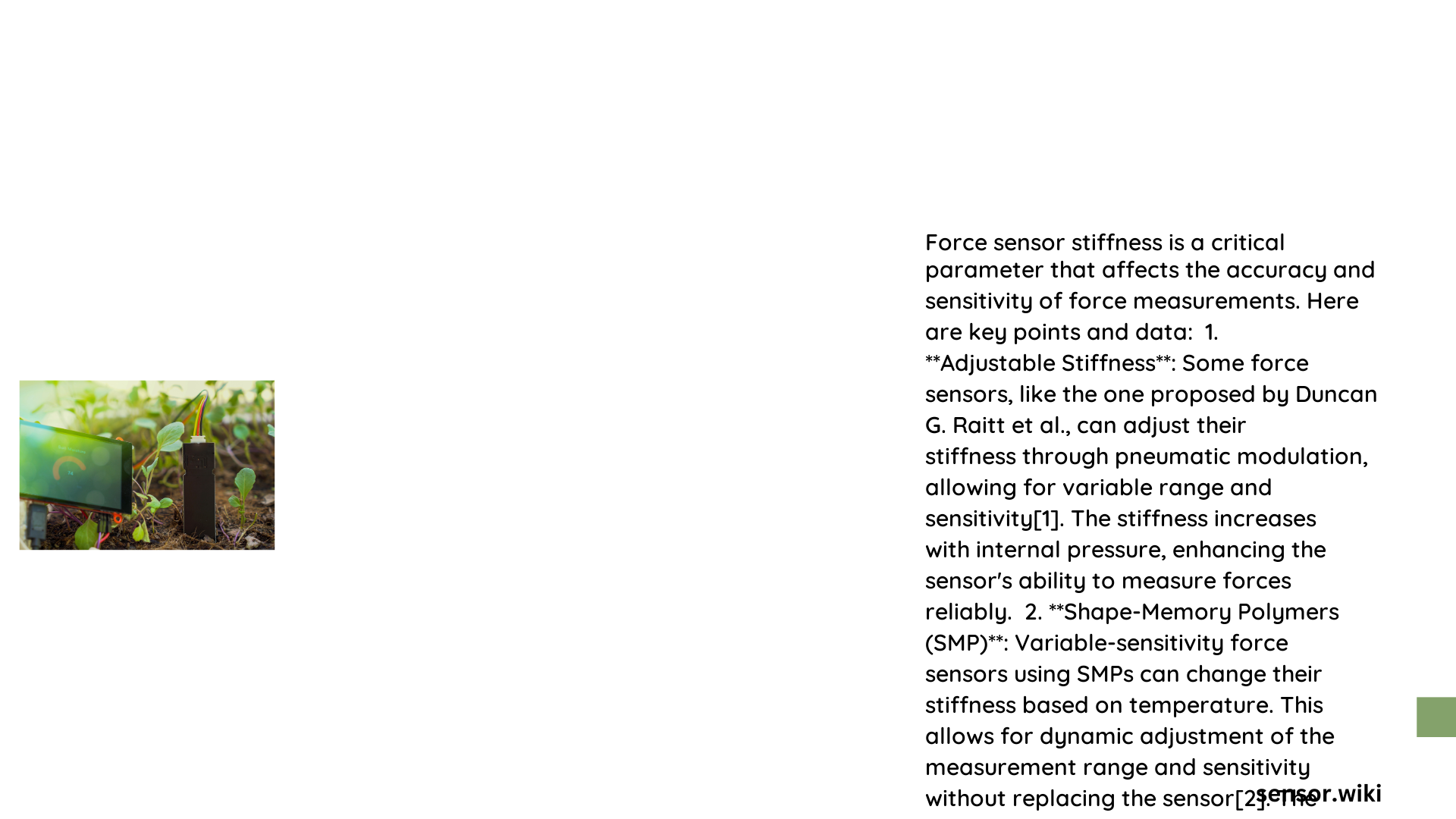Force sensor stiffness represents a critical parameter in sensor performance, determining the relationship between applied force and mechanical deformation. Understanding stiffness enables engineers to select appropriate sensors, optimize measurement accuracy, and predict sensor behavior across various applications, from industrial robotics to medical devices and precision instrumentation.
What Makes Force Sensor Stiffness Critical?
Force sensor stiffness defines how much a sensor deforms under applied force, directly influencing measurement precision and reliability. Engineers must comprehend this characteristic to ensure accurate force measurements across different operational environments.
How Do We Measure Force Sensor Stiffness?
Measurement Techniques
- Indentation Method
- Uses a piston to apply controlled force
- Detects contact point using touch modules
-
Measures instantaneous force at contact
-
Force and Position Analysis
- Tracks force and displacement simultaneously
- Calculates stiffness through dynamic measurements
- Provides real-time stiffness evaluation
What Equipment Supports Stiffness Measurement?
| Equipment Type | Primary Function | Typical Range |
|---|---|---|
| Strain Gauge Sensors | Static Force Measurement | 10^4 to 10^6 N/m |
| Piezoelectric Sensors | Dynamic Force Detection | 10^6 to 10^8 N/m |
| Micro-controller | Data Processing | N/A |
| Position Encoders | Displacement Tracking | Micron-level precision |
What Factors Influence Force Sensor Stiffness?
Key Performance Characteristics
- Material Composition: Determines fundamental mechanical properties
- Sensor Design: Impacts deflection and response characteristics
- Operating Temperature: Affects material elasticity
- Frequency Response: Influences dynamic measurement capabilities
How Do Different Sensor Types Compare?
Piezoelectric Sensors
- Advantages:
- High-frequency response
- Minimal deflection
- Excellent for dynamic measurements
- Limitations:
- Higher cost
- Temperature sensitivity
Strain Gauge Sensors
- Advantages:
- Cost-effective
- High static measurement accuracy
- Linear response
- Limitations:
- Lower frequency response
- More complex calibration requirements
What Challenges Exist in Stiffness Measurement?
- Alignment Precision
- Ensuring perfect force application point
-
Minimizing measurement errors
-
Temperature Compensation
- Accounting for thermal expansion
-
Maintaining consistent performance
-
Hysteresis Management
- Reducing non-linear deformation effects
- Improving measurement consistency
Practical Recommendations
- Calibrate Regularly: Maintain sensor accuracy
- Match Sensor to Application: Select appropriate sensor type
- Consider Environmental Factors: Account for temperature and frequency variations
Conclusion

Force sensor stiffness represents a complex yet crucial parameter in sensor technology. By understanding measurement techniques, equipment requirements, and performance characteristics, engineers can optimize sensor selection and performance across diverse applications.
